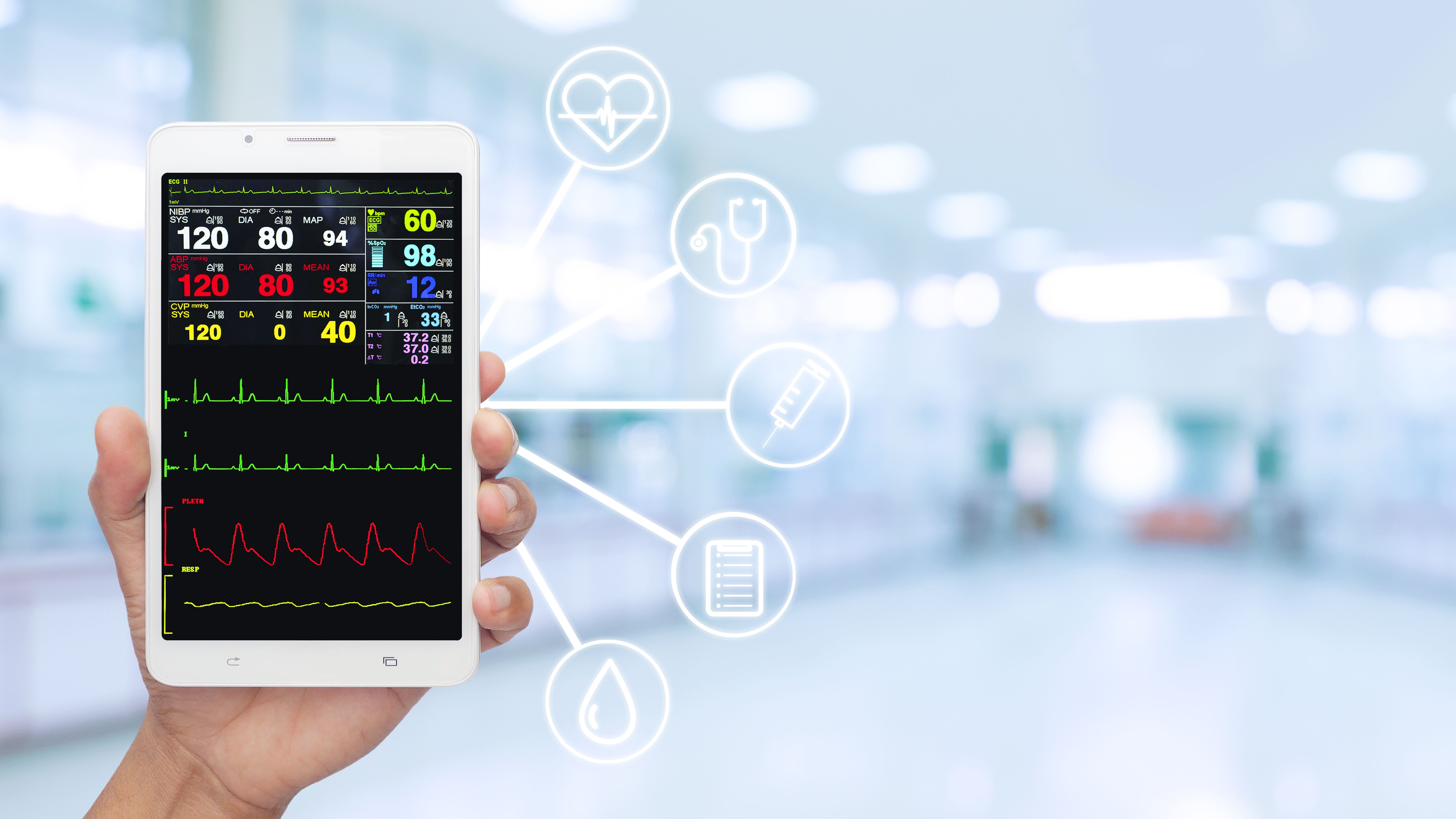News
Article
Unlocking the potential of remote patient monitoring
Author(s):
People, process, technology and finance are keys to success
Samuel Jenkins wakes shortly before 7 a.m. After a brief battle with gravity, he shuffles from bed to the bathroom where he steps on his connected scale.
Whoa! Five pounds heavier than yesterday. Must have overdone it at dinner last night, he thinks. As the scale records his weight and sends it to the cloud for analysis, Samuel walks to the kitchen to pour a cup of coffee.
Before he has even filled his cup, his smartwatch buzzes. Looking at the message, Samuel reads: How are you feeling today? (1 terrible – 5 great)
How am I feeling? He thinks. Not great; that’s a rarity for someone like me with CHF. Not awful… but maybe not quite right? I’ll choose 2. He taps the number 2 and finishes fixing his coffee.
Five minutes later his phone chirps. It’s Jenny, his care manager calling. They have a brief conversation resulting in Jenny setting an appointment for later that morning with his cardiologist.
Samuel’s fictional story illustrates the vision for remote patient monitoring (RPM). The ability to closely monitor patients between clinic visits – particularly people with chronic illnesses – helps avoid unnecessary acute care, enables better outcomes for patients, and reduces costs for financially beleaguered health care systems. If well designed and thoughtfully implemented, RPM is a game-changer.
Unfortunately, many RPM programs aren’t well integrated into the care continuum. To fulfill its potential, an RPM program needs to align people, process and technology within a viable economic model.
RPM programs can be highly effective in a variety of care journeys and sites of service. Whether in a post-acute transitional care program or primary care-directed chronic condition management, we have seen well-designed programs effectively reduce length of stay by as much as 50%, while simultaneously mitigating readmissions – all while maintaining staffing levels and increasing revenues.
Instituting a successful RPM program begins with identifying answers to a series of important and interrelated questions regarding people, process, technology, and finance.
People (patients and care teams)
- How will RPM be integrated into other care programs (e.g., chronic care management, transitional care management, etc.)
- How will RPM be integrated into quality programs and management activities?
- What happens during specialist referrals or a new diagnosis?
- How will RPM be introduced to patients?
- How will device logistics be handled?
- What is the billing workflow?
Technology
- How will patient data be accumulated and made available for monitoring, review, patient visits, reporting and billing?
- How will RPM integrate with the electronic health record or practice management system?
- Can any processes be automated?
Financial
Which costs are fixed (staff or software licenses) vs. variable (per patient revenue share or devices)?
Do the assumptions about patient volumes and projected revenue support the expense burden?
Staffing considerations
Staffing challenges are currently so ubiquitous in health care that it’s hard to imagine a clinical setting where excess capacity exists. Implementing any new program requires staff time for design, training and integration with other clinical workflows even before the actual patient care begins. It is critical to account for this time and the associated costs prior to implementing RPM. Fully outsourced RPM programs can manage day-to-day monitoring, but still must be integrated with upfront patient engagement, escalation workflows and billing processes on the clinic side.
Technology considerations
Technology is often positioned as a great facilitator of patient engagement, staffing efficiency and increased profitability. In reality each system introduced into the clinical setting brings complexity, potential for duplicate staff effort and patient confusion. The best technologies can integrate easily with core systems like electronic health records and population health platforms but also automate complex workflows and have the flexibility to solve multiple monitoring challenges. As noted above, RPM is typically only one component of a much larger care continuum and solutions should be flexible enough to address a variety of care plans across different service lines.
Financial considerations
Vendors are notorious for offering “no-brainer” ROIs. It sounds so simple to put patients on a tool and start collecting the financial returns. However, it’s critical to consider the hidden costs and assumptions. Productivity losses during implementation, integration costs and increased patient education time all act as a financial drag on any technology or process implementation. Similarly, overly optimistic projections about the number of enrolled patients over time, billing capture rates and retention percentages can move a financial model from black to red very quickly.
Other financial considerations include the ability to leverage an investment across other clinical workflows or service lines and the impact (positive or negative) a monitoring program will have on risk and value arrangements a provider group might participate in. These could include improvements in quality and patient satisfaction metrics and overall savings that will be offset by the increases in costs associated with the monitoring program.
Our experience, across a variety of clinical settings, is that remote monitoring can be an important contributor to clinical programs that improve patient outcomes, reduce staff burdens and contribute to the bottom line. Achieving these aims, however, requires a strategic design and well-executed implementation. Use our question guide referenced above to help set your RPM program up for success as you consider how people, technology, processes and financial goals can combine to modernize and elevate care delivery, effectiveness and efficiency.
David McCormick is chief operating officer at Carium. Angie Stevens is chief strategy officer for health care at Iron Bow Technologies.






